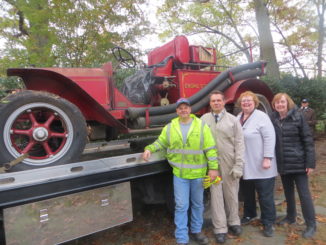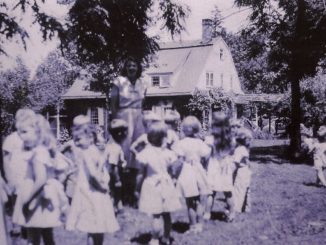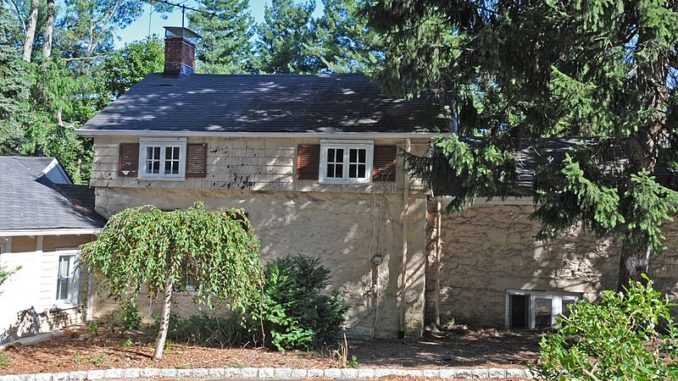
BERGEN COUNTY, N.J.—You may know a few in your own town. Or not.
If you follow local news, you may have heard about historic homes being demolished: two recently in Montclair and one in Midland Park, despite earnest but ultimately unsuccessful citizen efforts to preserve them.
But the reality is it’s more than likely that you have little to no awareness of historic structures right under your own nose—and what needs to be done to protect them.
And state preservation officials note, if you know the names and location of any historical structures or homes in your town or area, you’re a rare bird indeed.
Often times, people take for granted historic buildings or simply may not know the historical nature of a particular structure or site.
And, say officials, that’s leading to a critical loss of such buildings to developers and the wrecking ball—two forces which few local historians and preservationists are equipped to do battle with.
Some recent Bergen County losses include the Jacob Wortendyke House and the Crim-Tice House in Woodcliff Lake, and White Tenant House in Waldwick.
The bigger they are…
Two recent demolitions of historic structures were highly publicized, one occurring under cover of darkness and one occurring despite local efforts to initiate historic preservation efforts.
In Montclair, a property owner demolished a home dating to the Civil War—and another nearby historic structure—despite local efforts to stop a knock-down.
Previously Montclair had a “No Knock Down” ordinance on its books to protect homes over 75 years old but discontinued it in 2012 on the advice of the town planner.
That ordinance gave the preservation commission time to assess whether a structure should be protected and imposed a year-long moratorium on demolition. Residents outraged by the destruction of two historic homes called for its reinstatement.
And in late May, after failed efforts to preserve an original Dutch stone house—the Van Zile House built in Midland Park in 1736—the structure was demolished by its purchaser.
The home was added to the National Register of Historic Places in 1983 but fell into disrepair.
It was one of only a few remaining stone houses in the area that was built before the Revolutionary War.
History threatened
Currently, Bergen County is home to about 200 historic stone homes, according to county records. And many are threatened due to a lack of a local historic preservation ordinance, noted Tim Adriance, chair of Closter’s Historic Preservation Commission.
“Just Google ‘benefits of historic preservation’ and you’ll see all the community benefits, such as attracting visitors, vibrant downtowns, profitability, good shops and restaurants, and more,” said Adriance.
Adriance said even though Bergen County lists 273 historic sites countywide, it includes literally hundreds of sandstone and clapboard farmhouses, and other homes once occupied by major founders and citizens whose names are instantly recognizable, such as Demarest and Ackerman.
“It’s really discouraging,” H. Gelfand, chairman of the volunteer-led Bergen County Historic Preservation Committee told a news outlet. Gelfand said a 300-plus-year-old house should have been the centerpiece of the town or a museum.
He said because Midland Park does not have a historic preservation ordinance to designate and protect historic structures, there was little residents could do to protect it.
He said other ‘historic’ victims recently include the Zabriskie Tenant House in Paramus, the Crim-Tice House in Woodcliff Lake, the Thomas Demarest House in Englewood, the White Tenant House in Waldwick, the Jacob Wortendyke House in Woodcliff Lake, and the Van Gelder House in Wyckoff that have been demolished.
He suggested the Van Zile House’s silver lining might be to encourage more towns to adopt historic preservation ordinances to protect such structures.
Protect and preserve?
In Tenafly, several historic buildings have been torn down over the last decade, including a structure where Elizabeth Cady Stanton—a leading figure in the struggle to give women the right to vote—attempted to vote in an election in 1880, a full 40 years before women finally gained voting rights.

The local Historic Preservation Commission, or HPC, was formed in 1988 and while it has designated certain buildings or parts of buildings as “historic,” it has also faced public opposition to designating certain structures.
In late 2017, after its HPC had studied two homes and documented each’s historical nature, two homeowners opposed the designations at a public meeting—fearing restrictions that might be imposed. The council voted to move ahead with both designations despite the opposition.
In late 2018, Bow Tie Cinemas, owners of downtown Tenafly Cinema, shuttered the moviehouse and threatened to close it down for good if the HPC designated the building’s facade as historic.
This followed months of hearings about the designation, which also included discussions on designating parts of four other downtown buildings worth preserving.
Following a contentious public meeting, the council tabled the designations and the next day the theater’s management re-opened the local cinema.
‘Bullied their way’
Several preservationists—including HPC President Karen Neus—fought for the designations despite management’s threat to shut down. Neus charged Bow Tie management “bullied their way to a political decision it its favor.”
“By postponing or rejecting these historic designations the council runs the risk of seeing the look of our downtown streetscape determined by one owner, one business, not by the community who actually lives here,” Neus said in supporting all the historic designations.
The owners, Bow Tie Cinemas, continue to operate Tenafly’s only local theater.
After the upheaval following Bow Tie’s threat to permanently shutter the theater, Neus said she understood why they felt that designation could be perceived as an encumbrance on the property, although she disagreed and cited examples to the contrary.
She said “landmarked” properties all over Tenafly continue to sell well, and house families and businesses that remain a vibrant part of the community.
She said Bow Tie even purchased and redeveloped a landmarked building in Richmond, Va.
When two homeowners on Highwood Avenue—one a senior, longtime resident—both opposed designation of their single-family homes as “historic” at contentious council meetings following commission hearings, Neus wrote a letter strongly supporting such designation and opposing the homeowners’ call for compensation due to an alleged loss of property value, which she said was untrue.
Englewood tables
In September 2018 in Englewood, following several council discussions and over a decade of off-and-on debate about forming a historic preservation commission with the power to “designate” and protect historic properties, the City Council tabled an ordinance to provide such powers, tabling it due to concerns over the mayor’s authority to appoint members and possible impacts on property values and private property rights.
The City Council has barely mentioned the ordinance during sessions since.
For 15 years, the council has argued over what to do with more than century-old Russell C. Major Liberty School—which resides in a city-designated redevelopment area—and its fate remains a wild card in any discussion of a future city community center, now the focus of public forums citywide.
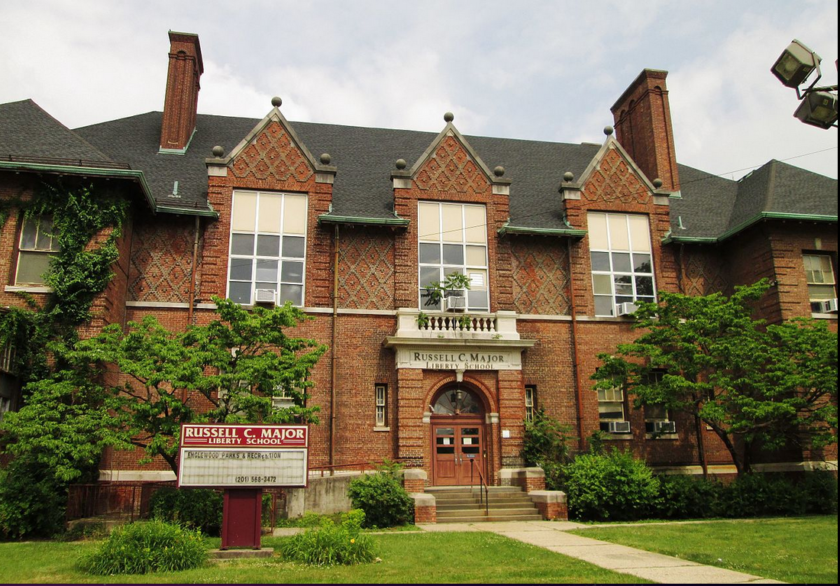
While strong sentiment exists to keep Liberty School and initiate “adaptive reuse” of the nearly 120-year-old building, the building has been vacant lately and may be deteriorating structurally with no plan in place for maintenance or preservation or future use.
Commission vs. demolition
A strong advocate for a powerful historic preservation commission to plan for, study, and propose recommendations to preserve historic properties is Closter Historic Preservation Commission Chair Tim Adriance.
Adriance told Northern Valley Press in 2018 that a historic preservation designation does not constitute an encumbrance on property, nor is it “a taking” of the property, as private property owners often allege.
He compared a local historic preservation ordinance to zoning ordinances, which allow a town to regulate private land uses and activities.
Following knockdown of Midland Park’s 1736-era Dutch Stone House in early May, one preservationist remarked that the only silver lining in such a loss was if Bergen County’s 71 other towns without historic preservation ordinances “may be inspired to draft them.”
An architect, zoning board chair and longtime preservation advocate from Westwood, William J. Martin, agreed that the only way for towns to protect local historic structures from possible demolition was to create a historic commission by ordinance and give it the power to designate properties as historic.
Martin said the town needs to have a Historic Plan Element in its master plan, adopt an ordinance establishing a historic commission, appoint members and to begin deciding what they want to protect and preserve for posterity.
He said most Bergen County towns “have a rich history” and the county’s 72 towns have a variety of advisory committees, advisory groups and some have historic commissions to help track, maintain and preserve historic structures and sites.
However, only an official commission duly designated to “landmark” local sites and structures for preservation can protect a historic entity from destruction, he said.
“If town councils and elected officials want to protect historic homes, they have to establish a historic commission by ordinance,” said Martin.
“That will protect a property from demolition,” he added. “I’d strongly suggest that all towns consider doing this,” he said, noting prominent historic properties recently up for sale or vulnerable.
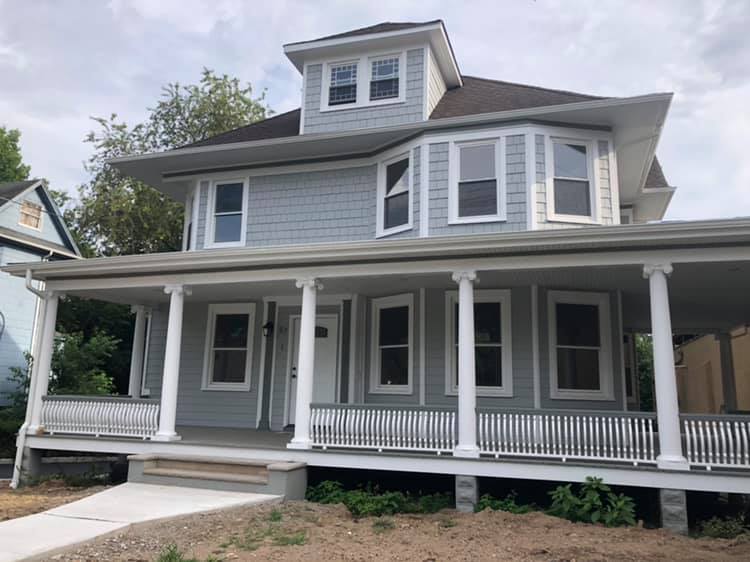
Federal, state listings
Martin said that federal designation as historic on the National Register of Historic Places, as well as state and county designations for historic status do not protect a property from future demolition should a new property owner decide to knock them down.
Only an empowered local historic preservation commission can prevent demolition, he said.
“Each community collectively has to determine how they feel about their cultural assets and how they would create an ordinance to protect those assets,” said Martin, who said a Historic Plan Element is “optional” in a local Master Plan.
Creating this ordinance and preservation commission “should be an open process, transparent, with public input that reflects the values of the community,” he said.
‘Find a balance’
“You’ve got to be able to find a balance between two sides,” he said, noting the divide between preservationists versus private property rights advocates.
“Historic preservation cannot preserve everything. I fully understand property rights and people will agree and disagree,” he said.
“You cannot save everything but hopefully you can get enough support to save important cultural assets for future generations,” he said.
Bergen County has about 20 active preservation commissions, said county Preservation Specialist Elaine Gold, including Closter, Tenafly, Westwood and Emerson. Gold manages the county’s annual historic preservation grant program.
Municipalities with preservation commissions are eligible for federal, state and county grants programs to protect and maintain historic sites and structures.

